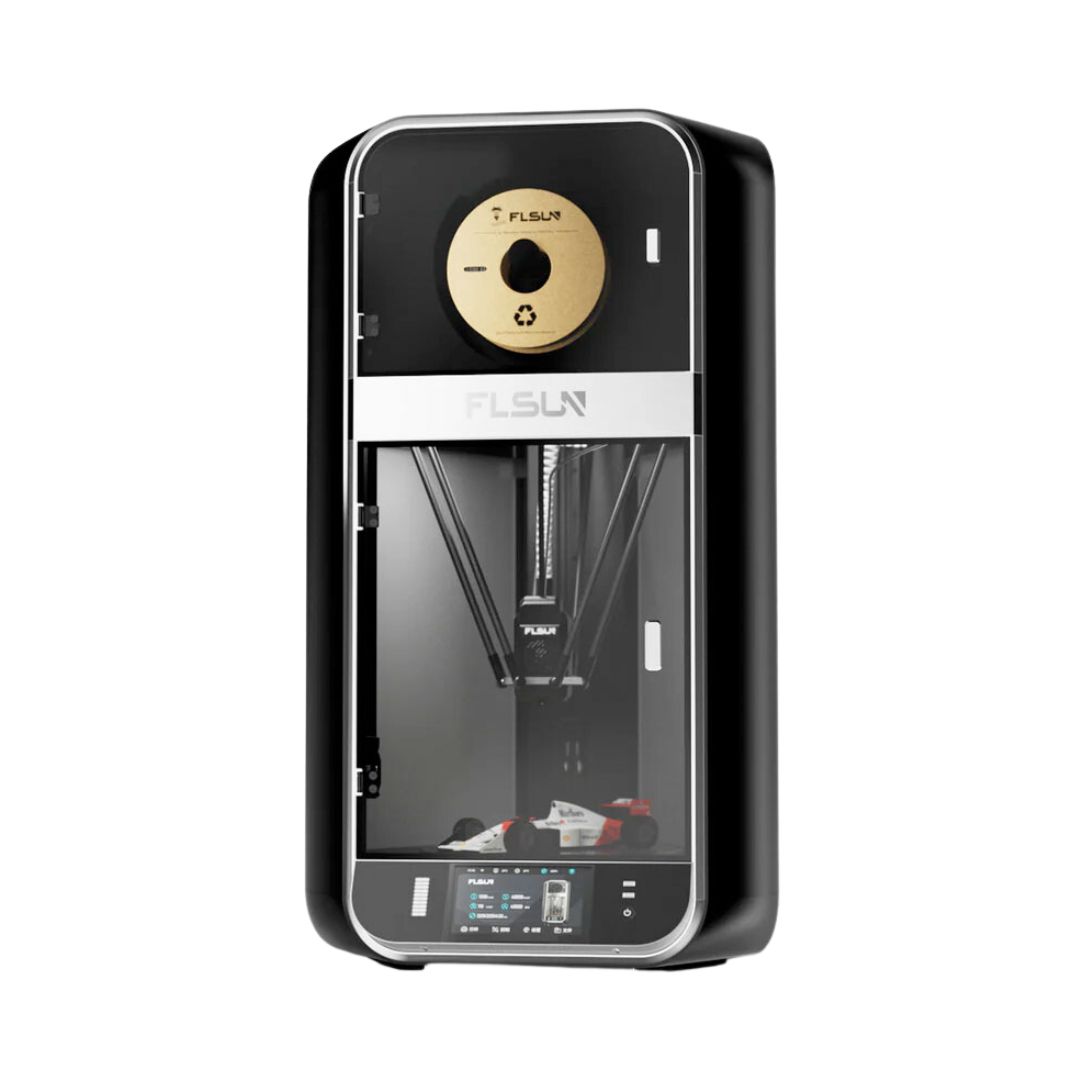Compare S1 PRO vs CR5 PRO H
Comparison between the best 3D printers
Choose the best 3D printer at the best price. The cheapest 3D printers are here.
Buy a 3D printer here with 3D Fila.
 |
 |
|
| Model | S1 PRO |
CR5 PRO H[BUY CR5 PRO H] |
| Printing Material | Filament | Filament |
| Buy Filament for FLSUN S1 PRO | Buy Filament forCreality 3D CR5 PRO H | |
| Estimated price | $1500,00 | $1300,00 |
| Manufacturer | FLSUN | Creality 3D |
| Release Year | 2024 | 2022 |
| Print Volume [mm] | 320x320x430 | 300x225x380 |
| Printer Size [mm] | 450x450x1200 | 530x487x612 |
| Weight [kg] | 41 | 32,5 |
| Power Loss Recovery | YES | YES |
| Enclosed printer | YES | YES |
| Bed Leveling | Automatic | Automatic |
| Filament End Sensor | YES | YES |
| Bed type | Heated | Heated |
| Power supply system | Direct Drive | Bowden |
| Standard nozzle | 0,4 | 0,4 |
| Maximum Nozzle Temperature [°C] | 350 | 300 |
| Maximum Bed Temperature [°C] | 120 | 100 |
| Maximum printing speed [mm/s] | 1200 | 100 |
| Filament holder | YES | YES |
| Camera for supervision | YES | YES |
| Recommended filaments | PLA, PETG, TPU, ABS, ASA, Nylon, PC, PP, HIPS | PLA, PETG, Tritan, Flex, ABS |
| Recommended slicers | FLSun Slicer 2.0, Orca Slicer | Cura, Simplify, Slic3r, IdeaMaker |
| Maximum Resolution [mm] | 0,01 | 0,1 |
| Processor | ATMEGA 2560 | |
| Display | Touchscreen 7'' | Display touchscreen 4,3'' |
| Power Supply | 500W 110-240V, 50/60HZ | 110/220V / 350W |
| Connectivity | Wi-Fi, USB, app FL Sun World | SD / USB |
| Operating systems | Windows, Mac | Windows, Mac, Linux |
| Date of registration in the system | 2024-12-16 | 2022-11-04 |
| Release date | 2024 | 2022 |
| Extra features | The FLSUN S1 Pro is a high-speed Delta 3D printer, reaching up to 1200 mm/s with 40,000 mm/s² acceleration. It features a build volume of 320 mm (diameter) x 430 mm (height), a 350°C hotend, dual-zone heated bed up to 120°C, a 50°C heated chamber, and an active filament drying holder. It includes a camera for remote monitoring, integrated UPS for power-loss safety, a HEPA filter, and a 7 touchscreen interface. Perfect for large and complex projects. | The Creality CR-5 PRO H 3D Printer stands out with a high-temperature nozzle (up to 300°C), a 300 x 225 x 380mm print volume, and a closed chamber for thermal stability. It includes BLTouch auto-leveling, a carbon-crystal silica glass base for easy model grip and removal, a filament sensor, and a resume print function. It has a 4.3-inch touchscreen interface, quiet operation, an attractive design, and is pre-assembled, ideal for technical materials. |
| Support for multiple colors and materials (AMS and CFS) | NO | NO |
Notes * |
||
| Cost-benefit | 7 / 10 | 6 / 10 |
| Hardware | 5.4 / 10 | 3.5 / 10 |
| Tela | . | . |
| Print volume | 4 / 10 | 4 / 10 |
| Performance | 9 / 10 | 1 / 10 |
| [BUY CR5 PRO H] |
Conclusion |
| In conclusion, both the FLSUN S1 PRO and the Creality CR-5 PRO H offer notable features that cater to different user needs and preferences in the realm of 3D printing. The S1 PRO, released in 2024, is a high-speed Delta printer designed for larger and more complex projects, boasting impressive specifications such as a larger print volume, higher maximum nozzle temperature, and faster printing capabilities. Its advanced features, including a 7-inch touchscreen, integrated power-loss recovery, and remote monitoring capabilities, make it a strong contender for those seeking performance and versatility. On the other hand, the CR-5 PRO H, although launched two years earlier, appeals to users who appreciate a balanced combination of thermal stability and user-friendliness. With its enclosed design, auto-leveling feature, and efficient build quality, it's particularly suited for those interested in technical materials and a quieter operation. While the print volume may be smaller, the printer's ease of use and reliability compensate for it. In terms of cost-effectiveness, the S1 PRO ranks slightly higher, while the CR-5 PRO H may offer more value for users prioritizing stability and ease of setup. Ultimately, the choice between these two printers will depend on individual needs, such as the types of projects undertaken, budget constraints, and personal preferences regarding technology features. |

